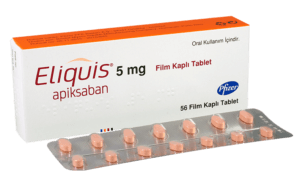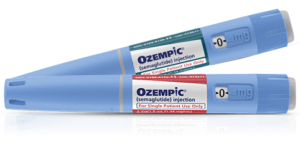
While researching health trends expected to boom in the next few years, I was particularly fascinated by the use of artificial intelligence (AI) and digital health technologies. These are changing the landscape of medicine, offering new ways to personalize patient care and improve research. One of the most exciting innovations is the digital twin, a virtual representation that could transform how early-phase clinical trials, like phase I and II, are conducted. Let’s take a look at how.
What is a digital twin?
A digital twin is a representation or replica of a real object, acting as its digital mirror. This technology has been used in industries such as the manufacturing industry, where virtual replicas were used to design, test, and improve products in a digital setting. More recently, digital twin technology has been adapted to health care.
In medicine, a digital twin acts as a representation of a patient. These twins are created using a mix of data, including patient-specific information, population data, and inputs from real-time environmental and patient factors. Imagine having a health condition that requires complicated surgery, and the surgeon could create a virtual version of what needs to be treated and utilize it for practice, potentially identifying any issues they may encounter before actually taking a scalpel to the patient. Amazing!
How can a digital twin improve clinical trials?
Phase I clinical trials focus on testing if a new drug or device is safe. These trials usually involve a group of healthy people who are given the medication to figure out if a new treatment is safe, discover side effects, and look for the best way to give the treatment. However, testing on healthy volunteers doesn’t always show how safe a drug or device will be for patients with the actual disease. This is because the disease, other health issues, or medications patients are already taking can affect how their bodies respond.
Digital health tools can work alongside traditional trials by using digital twins to predict how patients might react to a drug. These tools can help identify possible side effects and fine-tune dosages, improving safety assessments before the drug is given to actual patients.
Phase II clinical trials focus on finding the right drug dose and testing how well it works while also checking its safety. These trials usually involve larger groups of patients with the condition the drug is meant to treat. Digital health technologies offer key advantages in this process. For example, about 80% of clinical trials face delays due to slow patient enrollment. By using DHTs, fewer patients may be needed to evaluate a drug or device, which helps speed up development and reduces costs and burdens on patients. Digital twins may be especially helpful for developing treatments for rare diseases, where finding enough patients for trials can be a real challenge.
Are these technologies already being used?
Several companies are leading the way in using digital twins for clinical trials, and Unlearn.AI is one of them. They have developed a platform called TwinRCTs, which uses historical clinical trial data to create virtual representations of patients.
Unlearn.AI has also developed PROCOVA (Prognostic Covariate Adjustment), a tool that helps make clinical trial results more accurate and reliable. It uses advanced algorithms to account for patient traits, called prognostic covariates, that could influence trial results. By adjusting for these factors, PROCOVA reduces variation in the data, making it easier to spot the true effects of a treatment.
A key feature of PROCOVA is its ability to create virtual control groups using digital twins. A control group is a group of patients in a study who do not receive the treatment being tested, allowing researchers to compare their outcomes to those of the treated group. These twins are generated from real-world and clinical trial data, allowing researchers to compare the treatment group to the control group. This approach helps reduce the number of actual patients needed for the trial, which can lower costs and improve efficiency.
Unlearn.AI’s TwinRCTs technology has already been approved by the European Medicines Agency (EMA) for use in some clinical trials. The US Food and Drug Administration (FDA) has reviewed the technology and confirmed that PROCOVA meets its standards and is accepted as a reliable statistical method.
What are the possible downsides to using digital twins for clinical trials?

Second, like many AI models, digital health technology decision-making processes aren’t always clear. This lack of transparency can create doubt among researchers, clinicians, and regulators, making it harder for digital twins to gain acceptance in clinical trials. Third, current digital twins are designed to focus on only one therapeutic area. While this specialization allows them to perform well in specific cases, it limits their ability to work across other medical fields.
Despite these hurdles, digital twins could bring major benefits to phase I and II clinical trials. As technology improves, it is expected to play a bigger role in clinical research, helping create safer, more effective, personalized patient treatments.
FAQs
How are digital twins used in healthcare?
Scientists can use digital twins to run experiments, study data, and test ideas. These tools let them model different groups of patients, treatments, and diseases. This helps them learn more and improve healthcare by making decisions based on solid evidence.
Is the digital twin part of AI?
Digital twins and AI are not the same thing. A digital twin is a virtual copy of a real-world object, while AI helps improve it by making predictions, analyzing data, and automating tasks.
Who funds clinical trials?
Clinical trials can be funded in various ways, but The National Institutes of Health (NIH) and pharmaceutical companies are key sponsors of medical trials. Drug companies usually pay for studies testing their own products, while the NIH focuses on research that isn’t driven by making money.

















